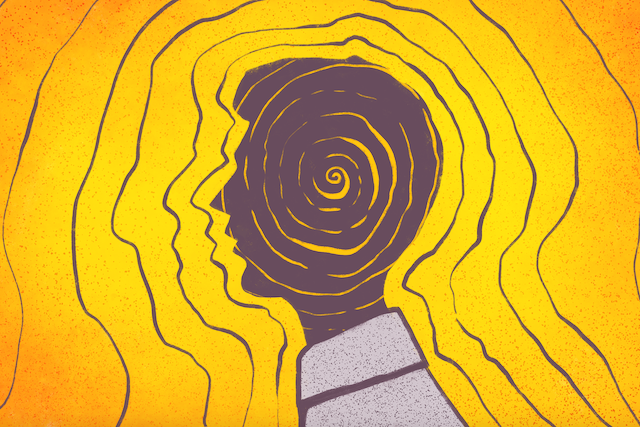5 Types Of Attraction We Can Experience In Relationships, From A Psychologist
Which ones are most important for you?


Our editors have independently chosen the products listed on this page. If you purchase something mentioned in this article, we may earn a small commission.
Have you ever felt unexpectedly drawn to, say, a bookish co-worker when you’re usually into the wild extrovert type? Or secretly wondered if the new guy you’re dating is going to be as attractive on the inside as he is on the outside? Or, do you ever find yourself amazed by the way you feel soulfully connected to your partner?
Although we often think of attraction in the physical sense, there’s far more to the realm of attraction than meets the eye. In fact, the most common types of attraction that humans experience can be broken down into five general categories: sexual, romantic, physical, emotional, and aesthetic.
Interestingly, these five types of attraction can co-occur or arise on an individual basis. For example, you might be very aesthetically attracted to a person but, once getting to know them fairly well, find that there is no emotional or romantic attraction. As described in detail in my book Date Smart, attraction can get the better of us if we aren’t aware of its nuanced power. Our relationships tend to thrive when we are mindfully aware of how the forces of attraction can work for and against our well-being.
So, let’s talk about each of the five types of attraction and how they can function in our interpersonal relationships of all kinds:
You’re likely familiar with sexual attraction, that eager desire to engage in some form of sexual connection. Sexual attraction can arise on a variety of levels, from a desire to kiss in a sexual way to the urge to have sexual intercourse.
When sexual attraction arises in the context of a friendship, the draw toward sexuality can complicate the underlying friendship unless the sexual attraction is mutually shared and openly discussed. In the context of a romantic relationship, sexual attraction is often an essential component; that said, some romantic relationships thrive when both parties feel that sexual intimacy and attraction is non-essential. And, of course, there are many short-term relationships or hookups that are based solely on sexual attraction; when both people are on the same page, such relationships can be sexually gratifying.
Tip
Sexual attraction is fabulous and ensures the survival of our species. Just as well, take notice if a strong sexual attraction is getting in the way of noticing important red flags.
We know romantic attraction is at work when we have the desire to partner intimately with another individual in the context of a relationship. Romantic attraction can be long-term or short-term in nature and can also be exclusive or non-exclusive.
When a platonic relationship exists, romantic attraction can sometimes build up in one or both partners. When only one partner shares the romantic interest, it can be difficult for the platonic relationship to thrive or even be maintained. However, if both people in a platonic relationship feel that they’ve become romantically attracted, the foundation of friendship can support a truly healthy long-term relationship.
Tip
Romantic attraction works best when both partners are aligned on needs, values, and priorities. Check in with yourself and your partner to make sure you’re on the same page.
Not to be confused with sexual attraction, physical attraction—which can occur in any type of relationship—is the desire to be touched (e.g., hugged) and cared for in loving ways. Physical attraction is a natural, instinctive drive in humans. Without a desire to be touched and cared for, our species would not survive. As such, physical attraction is essential from birth forward and can be a vital part of any type of relationship.
The key to physical attraction is to know and honor another person’s “physical attraction” needs, preferences, and boundaries. For example, some people enjoy a great deal of physical connection across platonic, romantic, and sexual relationships. Others, however, have a much lower need and tolerance for physical connection.
Tip
Especially in new relationships, physical attraction and sexual attraction often meld and co-exist. After the limerence stage, it’s not uncommon for physical attraction (and sexual attraction) to wane a bit. If this shift doesn’t feel right to you, let your partner know and work as a team to recalibrate.
The realm of emotions and emotional attraction is often inexplicable; it’s often our unconscious emotions that lead us to feeling a soulful connection with another person. Emotional attraction—which can surely occur in any type of relationship—is the felt sense of being drawn or connected to another person’s inner emotional realm.
Emotional attraction is the essence of healthy long-term relationships. When we feel emotionally connected to another person, we are able to bond in intimate, highly connective ways. Emotional attraction can occur in platonic, romantic, and sexual relationships. However, there are many relationships (especially those that are transactional) that are largely or wholly devoid of emotional connection. In my opinion, emotional attraction is the foundation for healthy platonic relationships and romantic partnerships.
Tip
Notice the core qualities of the people who you find emotionally attractive. These qualities—which could cover a wide range from warmth and kindness to coldness and stoicism—can tell you quite a lot about yourself and those in your life.
If you’re like many people, there’s a certain “type” of person you find visually attractive and appealing. Aesthetic attraction is largely instinctual yet also learned through socialization. Humans tend to have individual aesthetic preferences that may remain static or shift over time based on environment and life experience.
Although aesthetic attraction is often important for initiating romantic or sexual interest, aesthetic attraction is insufficient for sustaining healthy long-term relationships of any type. Of course, it’s important that we find a romantic or sexual partner at least moderately attractive, yet aesthetics can take a relationship only so far. As well, platonic relationships are often far less based on aesthetic attraction than either sexual or romantic relationships.
Tip
Just as with some of the other forms of attraction, it’s important to be wise about the limits of aesthetic attraction. What’s pleasing to the eye is not always pleasing to the heart and soul.
Each of the five types of attraction can have a role in why we want to be around another person and in encouraging us to connect with others, for better or for worse. Whether you’re currently in the world of dating, taking a break, self-partnered, or in a long-term relationship, you’ll thrive when you use the power of the five types of attraction to work for you.
Reset Your Gut
Sign up for our FREE doctor-approved gut health guide featuring shopping lists, recipes, and tips
You are now subscribed
Be on the lookout for a welcome email in your inbox!
https://www.mindbodygreen.com/articles/types-of-attraction

 Kass
Kass 























.jpg&h=630&w=1200&q=100&v=f776164e2b&c=1)








